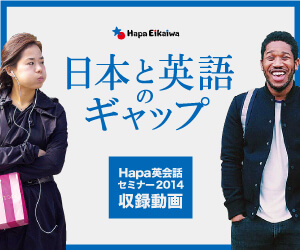第439回目のポッドキャストのテーマは「お気に入りの日本のお土産」です。皆さんは普段、外国人の友達にどんなお土産を贈りますか?今日の会話では、シージェーとアレックスが、日本に住んでいるときにもらったお土産について話します。よくもらうお土産から特に印象に残っているものまで、さまざまなお土産を紹介してくれます。どんなお土産をもらったのか、聞いて考えましょう。
Podcast: Play in new window | Download | Embed
会話内容「お気に入りの日本のお土産」
【CJ】All right, Alex. So what is your favorite omiyage—omiyage that you’ve received in Japan?
【Alex】Yes. Oh, I’m going to have to say matcha from Kyoto.
【CJ】Ah.
【Alex】So I’ve received that a couple of times from friends—a friend and a boyfriend and…and, yeah. That’s definitely one of my favorite consumable omiyage.
【CJ】Okay.
【Alex】I also—but my most special omiyage is probably the fude that I received from Kyoto. And that was from my boyfriend.
【CJ】Nice.
【Alex】So a Japanese calligraphy brush.
【CJ】Ah, okay. Okay.
【Alex】Yeah, I actually…
【CJ】That—that’s unique. Oh, you got it with you!
【Alex】Yeah, but I spilled water everywhere. (laughs) That’s this one here.
【CJ】Okay, nice.
【Alex】But I guess no one can see on the podcast. But, yeah.
【CJ】No, but it’s nice and brown. And it’s got some black—black end.
【Alex】Yeah.
【CJ】Yeah.
【Alex】It’s—it’s got soft bristles…
【CJ】Nice.
【Alex】…but not so soft that it’s difficult to—for me to use as a beginner. So, how about you? What is your favorite omiyage that you’ve received?
【CJ】Hm, favorite…well, you know, I would often get…I don’t want to say “typical”—maybe that’s not the right—the right word I want to use. But, you know, people would give us—if I would travel with my friend and whatnot, they would give us fans. And that’s…
【Alex】Oh, that’s really cool. Yeah.
【CJ】…open fan. We would get chopsticks. Things like that.
【Alex】Ah, yeah. That’s nice.
【CJ】It was typical. I mean…and I’m not—you know, I’m not minimizing it at all. I would take my chopsticks home and even though I didn’t have much to eat with them…
【Alex】Yeah, yeah.
【CJ】…I still—I would use them to kind of decorate the—you know, the—put them up. Display them somewhere.
【Alex】Yeah, I totally understand.
【CJ】Yeah, I mean this is—this is the typical—the typical thing.
【Alex】Yeah, yeah.
【CJ】But if I had to tell you one that I got that wasn’t quite as…quite as typical, it was…
【Alex】Yeah, what’s a special one? (laughs)
【CJ】Well, it was—yeah, exactly. In the same—in the same…in Fukuoka, same area.
【Alex】Yeah.
【CJ】Same circle of friends, there was a lady who, you know, friend of Hashimoto, the man that took us to the waterless garden. She gave me and the guy that I was traveling with kimonos.
Questions of the day(今日の質問)
- What was Alex’s favorite omiyage that she received?
アレックスがもらったお土産の中で一番気に入ったものは何でしたか? - What did CJ do with the chopsticks he received as gifts?
シージェーはお土産でもらったお箸をどのように使っていましたか? - What did CJ and his friend receive from the woman who was friends with Hashimoto, the man that took them to the waterless garden?
シージェーと彼の友人は、枯山水の庭園に連れて行ってくれた橋本さんの友人女性から何をもらいましたか?
Answers(解答)
- Her favorite omiyage was matcha from Kyoto. She also says that her most special omiyage was fude she received from Kyoto.
彼女が今までで、一番気に入ったお土産は京都の抹茶です。また京都でもらった筆が、彼女にとってとても特別なお土産になりました。 - He would often use them as decorations.
彼は主にお箸は飾りとして使用しました。 - Hashimoto’s friend gave them both kimonos.
二人は橋本さんの友人から着物をもらいました。
Summary(要約)
Alex and CJ share their favorite omiyage that they received from, or while traveling in, Japan. Alex’s favorite omiyage was matcha tea that she received from Kyoto.
アレックスとシージェーは、日本を旅行した際にもらった物や日本からのお気に入りのお土産を紹介します。アレックスのお気に入りのお土産は、京都の抹茶でした。
Alex got most of her matcha omiyage from friends and her boyfriend. She described her matcha from Kyoto as her favorite “consumable” omiyage that she received.
アレックスは、ほとんどの抹茶のお土産は友人や彼氏からもらったそうです。京都の抹茶は、彼女にとって一番気に入っている「消耗品」のお土産だと話します。
But the omiyage she considers her most special is the fude she received from Kyoto that her boyfriend gave her. Alex liked her fude because the brushes had soft bristles that made it easy for her as a beginner to use.
しかし、彼女にとって最も特別なお土産は、彼氏からもらった京都の筆でした。アレックスがこの筆を気に入った理由は、毛が柔らかく、初心者でも使いやすいからです。
In CJ’s travels through Japan, he and his friends were often given fans and chopsticks as gifts, the latter being something CJ used to decorate his living spaces. On the trip where he and his friend went to the waterless garden, they were given kimonos by a friend of Hashimoto, the man who showed them the garden.
シージェーが日本を旅した際、彼と彼の友人は扇子やお箸をお土産としてもらうことが多かったそうです。シージェーはもらったお箸は飾りとして使用していました。彼と彼の友人は枯山水の庭園に連れて行ってくれた橋本さんの友人から着物をもらいました。
Phrases of the day(今日のフレーズ)
1) Nice and(いい感じに〜)
nice and ~は、andの後に続く形容詞の意味を強調する役割を果たすことから、「nice and + 形容詞」で「いい感じに〜だ」や「いい具合に〜だ」のように何かがちょうど良い具合であることを表します。例えば、ラーメンがいい感じに辛い場合、“This ramen is nice and spicy.”と言います。
- I like this restaurant because it’s nice and quiet.
(このお店は静かで心地よいので好きです)
- It’s nice and cool here. It’s really hot outside.
(ここはいい感じに涼しくて気持ちが良い。 外は本当に暑いよ)
- My coworker always keeps his desk nice and clean.
(同僚はいつも机の上をきれいにしています)
2) And whatnot(などなど)
and whatnotは「〜など」を意味し、and things like thatと似たような意味を持ちますが、より口語的な響きがあります。特に、会話中に既に述べたことに関連する別の例を曖昧な感じで説明する時に使われ、例えば、「私はポテトチップスやお菓子などを買いました」は “I bought chips, candy and whatnot.”と表現します。
- I went to the grocery store to pick up eggs, milk, and whatnot.
(スーパーに卵や牛乳などを買いに行った) - I’m going to bring paper towels, paper plates, and whatnot.
(ペーパータオルや紙皿などを持って行きます) - He enjoys outdoor activities like hiking, camping, and whatnot.
(彼はハイキングやキャンプなどのアウトドアアクティビティが好きです)
3) Minimize(最小限に評価する)
minimizeは「最小限に抑える」と「最小限に評価する」の二つの意味を持ち、今日の会話では「最小限に評価する」の意味で使われており、特に何かの重要性を軽視する意味合いが含まれます。例えば、今日の会話でシージェーは「お土産としてお箸をよくもらう」と言った後に、“I’m not minimizing it at all.”と言い、「決してそれが悪いお土産だというわけではない」とフォローしています。ここでは、お箸を過小評価していないことが強調されています。
- He’s a humble person that always minimizes himself and gives credit to others.
(彼は自分を褒めず、他人を褒める謙虚な人です) - I’m not trying to minimize the importance of grammar.
(文法の重要性を軽視しているわけではありません) - He’s the type of person who tries to minimize his faults.
(彼は自分の欠点を最小限に抑えようとするタイプです)
4) Put up something(掲示する)
put up somethingは「掲示する」や「掲げる」を意味します。人目につきやすいところに何かを掲げるニュアンスが含まれ、ポスターを貼ったり、看板を出したり、クリスマスの飾り付けをするような状況で使われます。例えば、「このポスターを貼りましょう」は“Let’s put up this poster.”と言います。
- Can you help me put up these decorations?
(この飾りをつけるのを手伝ってくれる?)
- You should put up your travel pictures on the wall.
(旅の写真を壁に貼ったらいいと思うよ)
- I put up this week’s schedule on the board.
(今週のスケジュールを掲示板に貼りました)
5) Circle of friends(友達の輪)
直訳で「友達の輪」となるこの表現は、ある人が持つ、友人や親しい関係のグループを指します。一般的には、自分の社交的な繋がりや、親しい友人や知人のグループを指す言葉で、個人が日常的に交流し、情報を共有したり、互いに助け合ったり、支えたりする集団を表します。
- Come to the party, and I’ll introduce you to my circle of friends.
(パーティーに来たら、私の仲良しグループに紹介するよ)
- Celebrities typically have a tight-knit circle of friends.
(有名人は一般的に、親密な友人関係を持っています)
- You don’t need many friends, but you need a trusted circle of friends.
(多くの友達は必要ないが、信頼できる友人の輪は必要である)
Vocabulary(単語)
- Consumable・・・消耗品
- Calligraphy・・・書道
- Fan・・・扇子
Expressions(表現)
- I’m going to have to say・・・〜と言わざるを得ない
登場人物紹介
CJ
アメリカ出身、日本在住。生徒がリラックスした状態で英語に取り組めるよう、記事や動画、その他学習に役立つメディアを使ってレッスンを行う「英語コーチ」。カフェトークでは、教科書通りの文法や知識を教えるだけでなく、一人一人に合わせたきめ細やかなレッスンを提供中。
カフェトークのプロフィールはこちら
Alex
カリフォルニア州出身、東京在住。日本の小学校や大手英会話教室で英語講師として働いた経験を持つ。カフェトークでは、英会話レッスンの他、論文やプレゼンテーション、レポートなどの編集サポートレッスンも提供中。
カフェトークのプロフィールはこちら
Advertisement







